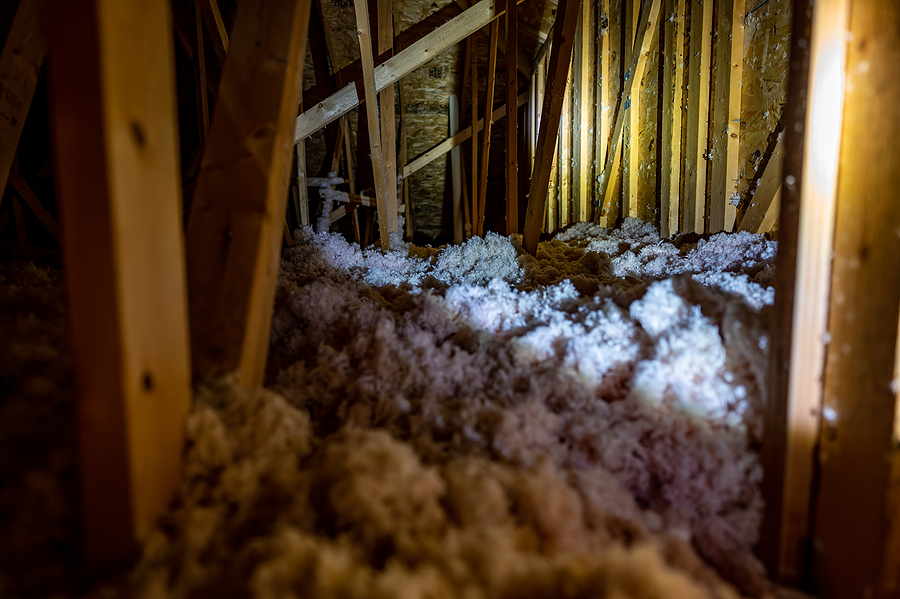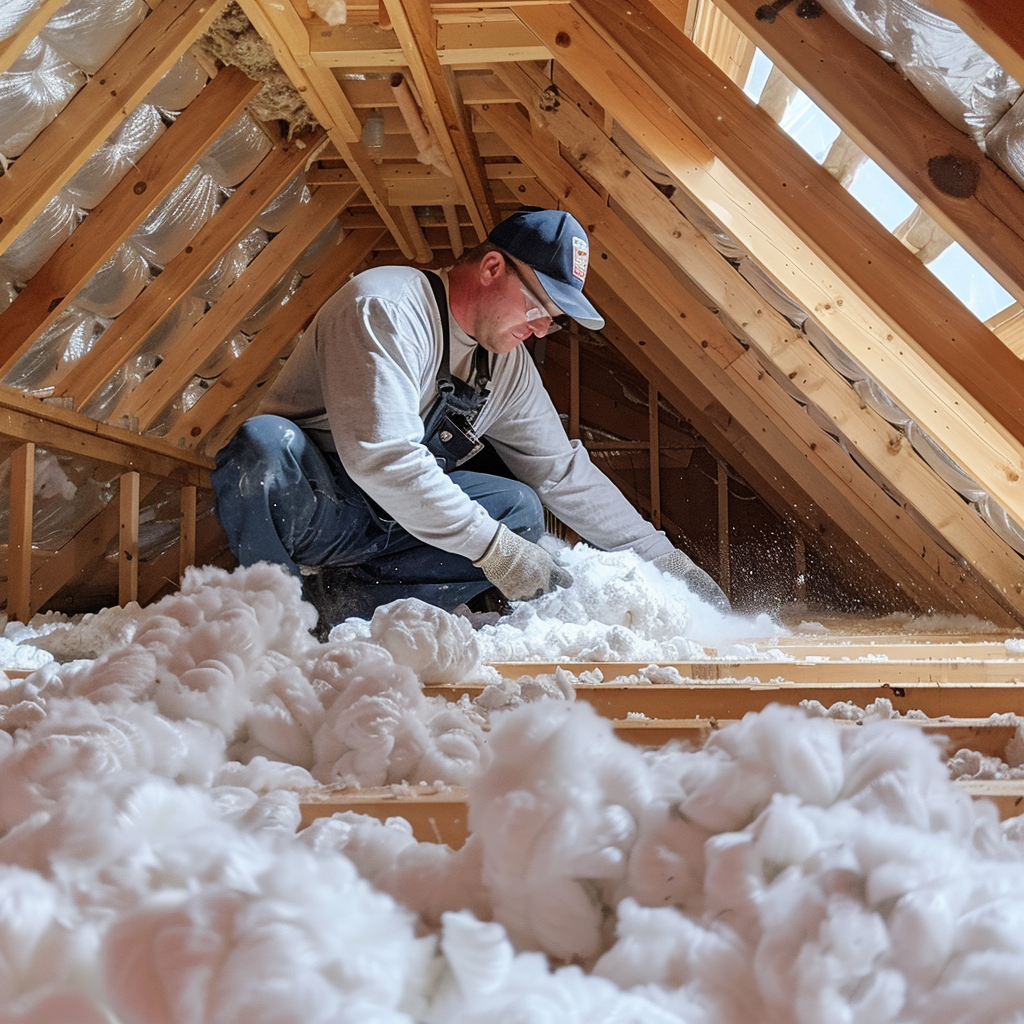Why Attic Insulation DFW is Essential for Energy Performance in Dallas-Fort Worth
Why Attic Insulation DFW is Essential for Energy Performance in Dallas-Fort Worth
Blog Article
Discover the Different Kinds Of Attic Insulation and Their Distinct Benefits for Your Home's Energy Efficiency

Fiberglass Insulation
Fiberglass insulation is among the most typically utilized materials for attic room insulation because of its superb thermal efficiency and cost-effectiveness. Composed of little glass fibers, this product successfully traps air, developing an insulating obstacle that helps preserve regular indoor temperatures. Its high R-value per inch makes it especially efficient at standing up to heat transfer, which is vital for power conservation in homes.
Setup of fiberglass insulation is reasonably simple, commonly offered in batts or loose-fill kinds, fitting different attic room configurations. Additionally, it is immune and non-combustible to wetness, reducing the danger of mold development. This sturdiness adds to its longevity, making fiberglass a viable long-lasting investment for property owners.
Additionally, fiberglass insulation is typically made from recycled products, which boosts its eco-friendliness. The product can likewise add to soundproofing, minimizing noise transfer between rooms. While it is vital to put on protective equipment during installation to avoid inflammation from the fibers, the overall benefits of fiberglass insulation, including energy financial savings and ecological considerations, make it a popular selection for improving attic room efficiency and promoting a comfortable living atmosphere.
Spray Foam Insulation
Spray foam insulation is a highly reliable alternative for attic room insulation, recognized for its superior air securing and thermal performance. This cutting-edge insulation material is made up of a combination of isocyanate and polyol material, which, when combined, broadens rapidly to load gaps and dental caries in the attic room. Its capability to abide by different surface areas makes certain a continual obstacle against air leaks, substantially minimizing warm loss throughout colder months and heat gain during warmer periods.
One of the essential benefits of spray foam insulation is its high R-value per inch, which implies it gives superb thermal resistance in a relatively slim application. This is particularly beneficial in attics where area is typically limited. Additionally, spray foam can help decrease moisture build-up, decreasing the risk of mold and mildew growth, which can be destructive to both the structure and indoor air high quality.
While the preliminary price of spray foam insulation might be greater than conventional options, its long-term energy cost savings, coupled with boosted comfort and enhanced home worth, make it a worthwhile financial investment for home owners seeking improved power efficiency. Attic Insulation DFW. On the whole, spray foam insulation stands apart as an efficient option for enhancing attic insulation
Cellulose Insulation

Cellulose insulation is a prominent choice for attic insulation, mainly made up of recycled paper items treated with fire resistants. This eco-friendly option is known for its excellent thermal performance, properly reducing warm transfer in both summer and cold weather. The dense structure of cellulose permits it to fill voids and gaps in attic spaces, providing a seamless barrier versus air leaks.
One of the significant advantages of cellulose insulation is its ability to stand up to mold and bugs, owing to the fire resistant treatments utilized during production. Additionally, it boasts a high R-value per inch, which converts right into superior energy performance. House owners can anticipate lower cooling and heating costs as a result of enhanced insulation.
Setup is normally accomplished via blowing loosened cellulose right into the desired location, permitting a quick and efficient process. This method additionally decreases disruption to the existing structure. Moreover, cellulose insulation has a fairly reduced ecological influence, as its manufacturing process makes use of recycled products, contributing to lasting building practices.
Rock Wool Insulation
Amongst the numerous options for attic room insulation, rock wool, likewise recognized as mineral woollen, attracts attention because of its remarkable thermal and acoustic performance. Made from recycled or natural materials, rock woollen is developed by thawing rock and spinning it right into fibers, leading to a product that provides superb insulation residential properties.
Among the substantial advantages of rock wool insulation is its high R-value, which indicates its efficiency in resisting warmth flow. This particular not only enhances energy performance yet likewise contributes to keeping a comfy interior temperature year-round. In addition, rock woollen is inherently fireproof, making it a much safer option for homes as it can stand up to high temperature levels without melting or launching harmful fumes.
Moreover, rock wool insulation succeeds in soundproofing capacities, properly minimizing noise transmission between spaces and from outdoors sources. Overall, rock wool insulation gives a thorough solution for enhancing energy performance, safety, and convenience in household setups.
Radiant Barrier Insulation
Glowing barrier insulation acts as a reliable solution for lessening heat transfer in attics, especially in warmer climates. This kind of insulation jobs by reflecting convected heat far from living rooms, thus minimizing the amount of heat that enters a home throughout heat - Attic Insulation DFW. Usually made up of a highly reflective product, such as aluminum foil, glowing obstacles are installed in attics, facing the roof, where they can intercept incoming heat from the sun
The primary advantage of radiant obstacle insulation is its ability to lower air conditioning costs. By reflecting warm instead of absorbing it, glowing barriers can click reference aid preserve an extra steady interior temperature, reducing the workload on a/c systems. This efficiency converts into lower energy bills and increased comfort for house owners.
Along with energy savings, glowing barriers can additionally add to enhanced interior air high quality. By reducing heat buildup, they aid decrease humidity degrees, which can avoid mold and mildew development and enhance total air circulation. When mounted properly, glowing barrier insulation can be an important enhancement to any energy-efficient home, making it a worthwhile factor to consider for homeowners seeking to enhance their attic insulation strategy.
Verdict
In final thought, understanding the different kinds of attic room insulation-- fiberglass, spray foam, cellulose, rock woollen, and glowing obstacles-- enables house owners to make educated choices relating to this page power efficiency. By selecting the ideal insulation material, considerable decreases in power costs can be attained, along with improvements in interior comfort.

In final thought, understanding the various kinds of attic insulation-- fiberglass, spray foam, cellulose, rock wool, and glowing barriers-- allows property owners to make enlightened choices concerning energy effectiveness.
Report this page